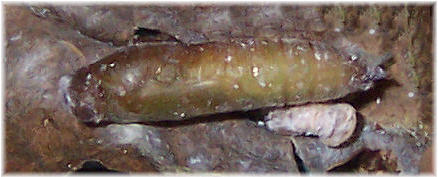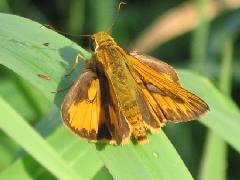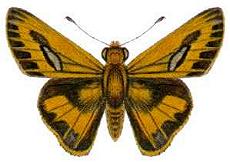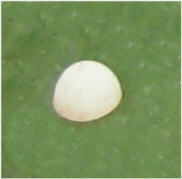
| Pale-orange Darter HESPERIINAE, HESPERIIDAE, HESPERIOIDEA | (donherbisonevans@yahoo.com) and Stella Crossley |

(Photo: courtesy of Wes Jenkinson)

| Pale-orange Darter HESPERIINAE, HESPERIIDAE, HESPERIOIDEA | (donherbisonevans@yahoo.com) and Stella Crossley |

(Photo: courtesy of Wes Jenkinson)
This Caterpillar lives in a shelter composed of foodplant leaves joined with silk. It feeds on various Grasses ( POACEAE ), including :

The pupa is brown, and formed in leafy debris.

The butterflies have a wing span of about 3 cms. They are brown with orange patches.

The males have a grey patch on each forewing. Underneath, the wings are greenish-yellow, with the same orange patches.

The eggs are white and hemispherical. They are laid singly on leaves of a foodplant.
Various subspecies occur over much of south-east Asia, including
The subspecies argea (Plötz, 1883) is found over much of Australia, including
Further reading :
Michael F. Braby,
Butterflies of Australia,
CSIRO Publishing, Melbourne 2000, vol. 1, pp. 220-221.
Johan Christian Fabricius,
Historiae Natvralis Favtoribvs,
Systema Entomologiae (1775), p. 531, No. 376.
 caterpillar |  butterflies |  Lepidoptera |  moths |  caterpillar |
(updated 4 April 2009, 2 March 2024)